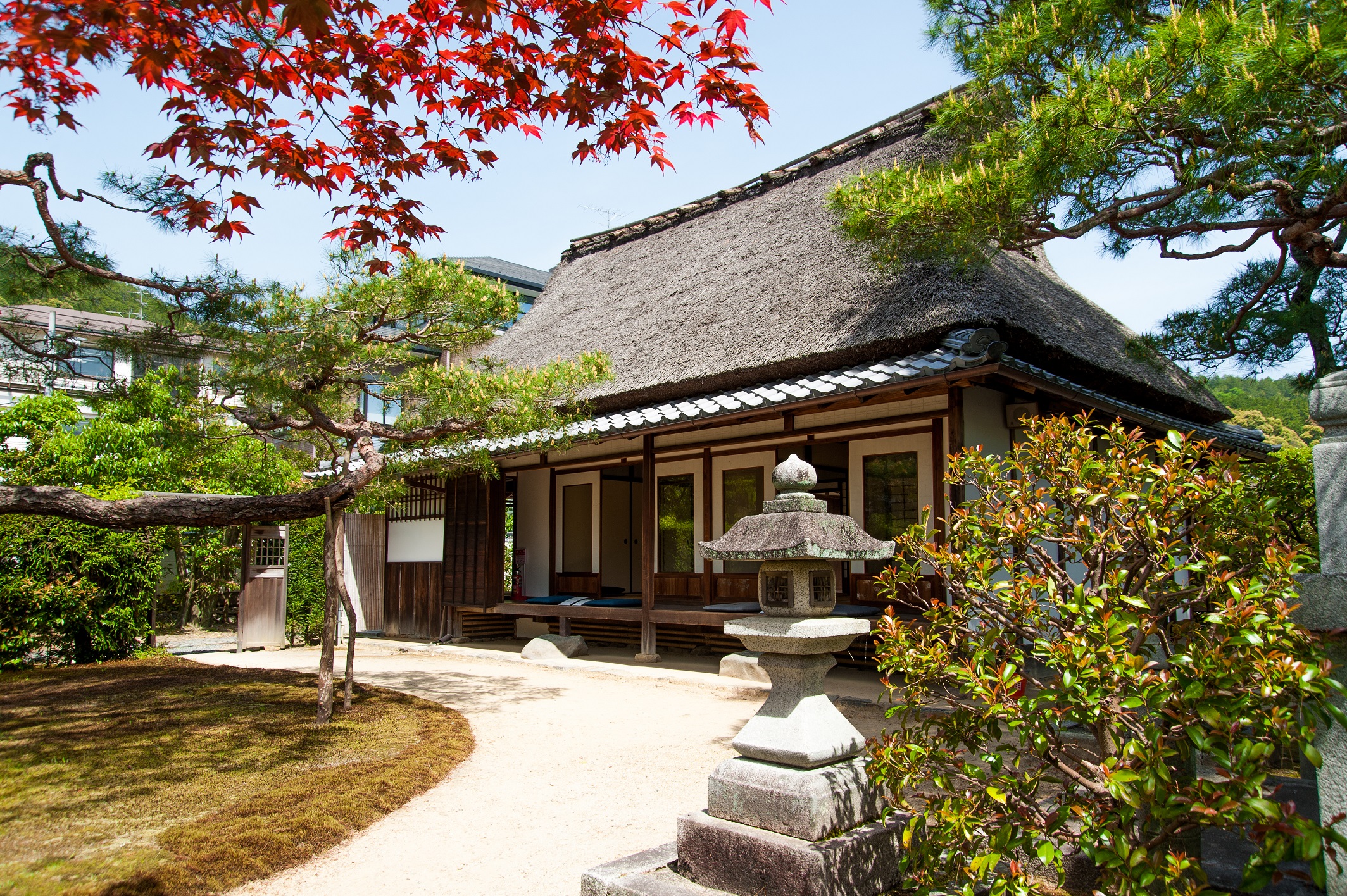
岩仓朋美,一位活跃于19世纪中后期日本向近代民族国家转型的贵族政治家,曾隐居于此。1932年,这里被指定为国家史迹。
19世纪中叶,日本正处于转型时期,从德川幕府时代的武士统治走向现代国家。一场旨在对抗德川幕府的政治运动应运而生,它推动着日本的现代化进程,同时也维护着皇室的利益。由于岩仓朋美倡导皇室与德川家族的合作,一些激进分子试图暗杀他,他被暂时驱逐出京都。正是在那时,他逃亡到京都郊区的这处宅邸躲藏。
■附属住宅
这座珍贵的建筑展现了19世纪末平民百姓的生活场景,至今保存完好,堪称奇迹。其建筑风格被称为“雪丹”,在当时的平民住宅中屡见不鲜。1864年,岩仓朋美买下了这栋简朴的房屋(后来成为该物业的附属建筑),原先是当地一位木匠的住所。岩仓迁居至此后,增建了一间主屋和一间连通房,形成了如今的隐居之所。岩仓迁居之后,这间附属建筑被用作仆人们的工作空间。仆人们在这里支持岩仓的政治活动,照顾他的日常生活,并协助他处理事务。
■本屋“轮云轩”
这座建筑因曾是19世纪历史人物的住所而弥足珍贵。西侧有一个低矮的平台入口(四季台),通常用作武士住宅的正门,东西两侧排列着门厅、六张榻榻米的候客间(次之间)和六张榻榻米的壁龛(壁龛),西南侧还有一个阳台。三块令人难忘的玻璃窗据说是大宫御赐的。此外,还有一个带有上下搁板的壁龛空间(称为“笠袋”和“地袋”),上面挂着岸信介的画作,岸信介是19世纪后期活跃于京都美术界的岸信派画家。这些搁板至今仍保存完好,与最初安装时一样。
■连通房
这座建筑连接着附楼和主屋,由一个根据废物处理功能划分为两个房间的浴室和一个带金属管道加热浴缸的澡堂组成。在普通家庭没有浴室的时代,这座浴室是应岩仓智美的要求而特别建造的。建造它的目的是,即使与岩仓智美进行了长时间的磋商,也能方便地接待从京都市中心来到这个偏远地区的游客。
■大学图书馆
该建筑建于1928年,用于展示和保存岩仓朋美的影响以及与明治维新相关的文件。其内部装饰,甚至包括展览柜,都保存完好,与最初建成时一样。该建筑由建造京都市政府主楼的建筑师、日本文部科学省公务员竹田五一设计。“大岳”一词取自岩仓朋美作为诗人的笔名。意思是住在比睿山另一边的人。如今,该建筑展出了岩仓朋美生平的展品以及有关岩仓家族成员的资料。它于2007年被指定为国家注册有形文化财产。
■花园
庭园于1928年进行了大规模的整修,并进行了翻新。庭园以一棵约150年树龄的松树为中心,据说是“岩仓朋美亲手栽种的”,是京都传奇园艺家小川治平第七代的最后创作时期的作品。如今,庭园仍然保持着简朴的乡村庭园的形象进行管理。
■伊发纪念馆
据说,岩仓朋美少年时期曾在岩仓地区居住,后来又因政治危机而对这片土地怀有深厚的感情。因此,在正屋东侧修建了一座纪念碑,并埋葬了他的部分头发。人们不仅瞻仰这座纪念碑,还瞻仰他的妻子岩仓真纪子的纪念碑。在北侧,还有他儿子友贞和友常的纪念碑。
■旧岩仓朋美咖啡厅的休憩所
宾客可享用烤绿茶、咖啡等热饮,以及当地糕点店的烘焙甜点。夏季,我们还提供冰淇淋。




